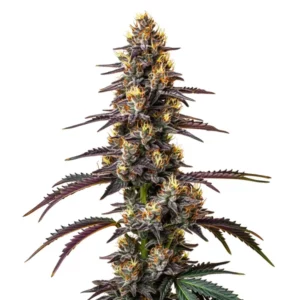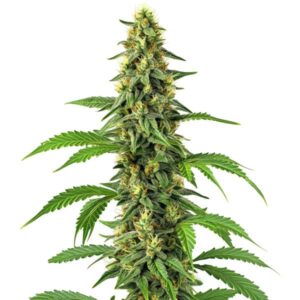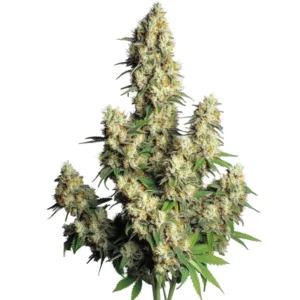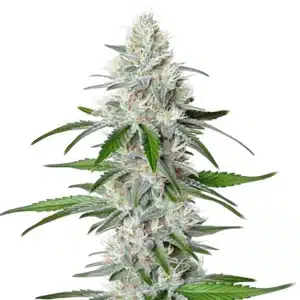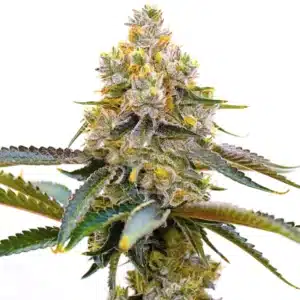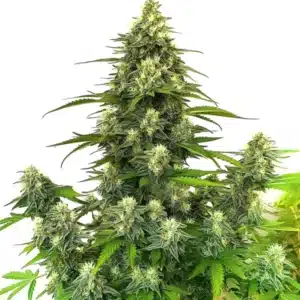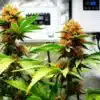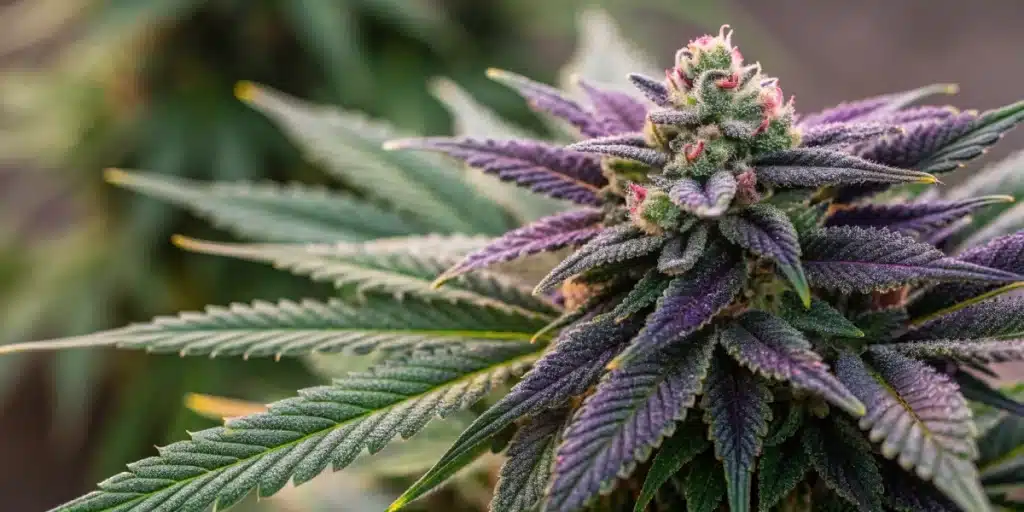
How To Grow Carbon Fiber Weed Strain
Carbon Fiber Weed Strain Seed Description
The Carbon Fiber Weed Strain also known as Carbon Fiber Kush, is a revolutionary hybrid. It represents one of the top achievements in cannabis breeding. This strain was crafted by crossing legendary varieties. It offers a blend of high potency, great flavor, and strong resilience. With THC levels reaching up to 25%, Carbon Fiber Weed Strain delivers a strong psychoactive effect with a rush of euphoria and deep relaxation.
Its buds are striking. They feature a dense layer of trichomes that sparkle like frost. The buds show deep green and purple shades. This strain also has a complex aroma with hints of pine, citrus, and a touch of diesel. Its smoke is smooth and rich, with sweet and earthy tones and a hint of spicy pepper.
Recommended Strains
Carbon Fiber
|
|
THC | 24% - 29% (High) |
|
|
Type | Feminized |
|
|
Yield | High |
|
|
Phenotype | 60% Indica / 40% Sativa |
24k Gold
|
|
THC | 19% - 22% (Medium) |
|
|
Type | Feminized |
|
|
Yield | High |
|
|
Phenotype | 60% Indica / 40% Sativa |
Carbon Fiber seeds work well for both beginners and experts. They have a robust growth profile and adapt to different conditions. Their strong genetic stability makes them ideal for anyone interested in cannabis cultivation.
Promos & Deals
Environmental Requirements for Growing Marijuana Carbon Fiber Strain
This strain grows best in conditions similar to the Mediterranean climate. It needs warmth, plenty of sunlight, and moderate humidity.
Indoor growers should keep the temperature between 68-78°F (20-26°C) during the day, with a slight drop at night. It is important to control humidity. Keep it around 40-50% during the vegetative stage and lower it to 30-40% during flowering. This helps prevent mold and stress while promoting healthy, resinous buds.
Lighting is crucial for Carbon Fiber Weed Strain. Use advanced LED systems that mimic full sunlight. Reflective walls or Mylar can boost light exposure, ensuring even growth and maximum potential from each plant.
For outdoor cultivation, choose a spot that gets direct sunlight most of the day. Provide protection from strong winds and heavy rain to keep young plants safe. In areas with variable weather, greenhouses can offer a controlled setting that still uses natural sunlight. This extends the growing season and helps prevent pests and diseases.
Setting Up The Growing Cannabis Space
Creating the right space is the first step to a good harvest of Carbon Fiber Weed Strain. Indoor growers should pick a room or tent where they can control light, temperature, and humidity. An efficient ventilation system with carbon filters helps manage air quality and odor. Adjustable LED lights let you set the right light cycle for both vegetative growth and flowering.
The choice of growing medium is key. Soil enriched with organic nutrients gives a strong base. It helps roots grow well and absorb nutrients. Hydroponic systems can also work well. They offer faster growth and higher yields if you carefully control nutrients and pH levels.
For outdoor growing, choose a location with plenty of sun, shelter from strong winds, and soil that drains well. Improve soil fertility with compost, worm castings, and organic matter. A rain shelter or drip irrigation system can help control watering so that plants get the right amount of moisture.
Propagation and Germination of Carbon Fiber Seeds
Starting with good propagation and germination is vital for a healthy cannabis garden. These early steps affect the plant’s entire life cycle. Handle the early stages with care and attention to the needs of the Carbon Fiber Weed Strain.
Starting with Quality Seeds
Select high-quality, feminized Carbon Fiber seeds from a trusted seed bank. High-quality seeds have a higher germination rate and stable genetics. They grow to show the desired traits such as high THC, a strong flavor, and good yield. Feminized seeds remove the need to identify and remove male plants, making the process simpler.
Optimal Conditions for Germination
Germination needs the right mix of humidity, warmth, and darkness. These conditions mimic what seeds need in nature. You can use the paper towel method. Place seeds between moist paper towels in a dark, warm area. Alternatively, plant seeds directly in a medium with proper moisture and temperature.
- Moisture: Keep the seeds moist but not soaked. Too much water can rot the seeds, while too little will stop germination.
- Warmth: Maintain a consistent temperature between 70-85°F (21-29°C). Heat mats can help if needed.
- Darkness: Seeds do not need light to germinate. They should be kept in the dark, as if they were buried in soil.
The Germination Process
- Pre-soak: Soak seeds in lukewarm water for 12-24 hours. This softens the outer shell and helps the taproot emerge.
- Planting: If you use the paper towel method, transfer the seed to the growing medium once the taproot appears. If you plant directly, place the seed about a quarter-inch deep and lightly cover it.
- First Signs of Life: Within a few days to a week, the seedling will break through the soil. At this point, introduce light so that it can start photosynthesis.
After Germination
Once the seedlings emerge, they enter a critical stage. Provide a gentle light source like T5 fluorescent or dim LED lights. Use an 18-hour light and 6-hour dark schedule to support strong vegetative growth. Keep the soil moist without overwatering. Ensure the growing medium never dries out completely. Maintain a stable environment with gentle airflow and avoid stress. This careful care sets the stage for healthy and productive plants.
Vegetative Phase of Cannabis Seeds Carbon Fiber Weed Strain
During the vegetative phase, the Carbon Fiber Weed Strain grows rapidly. Plants build a strong structure and lush leaves. Provide 18-20 hours of light per day to boost growth. High-quality LED lights that give a full spectrum are best for this stage.
Nutrient needs are high during this phase. Focus on nitrogen to build leafy growth. Use a balanced, slow-release fertilizer rich in nitrogen, phosphorus, and potassium. Monitor plant health and adjust nutrient doses as needed. This will help prevent deficiencies and prepare the plant for flowering.
Water the plants so that the soil stays moist but not waterlogged. Let the top layer of soil dry out slightly between watering. This encourages deeper root growth and improves nutrient uptake.
Use training methods such as topping and low-stress training (LST). These techniques shape the plant. They improve light penetration and air circulation in the canopy. This not only enhances plant health but also increases yield by exposing more bud sites to light.
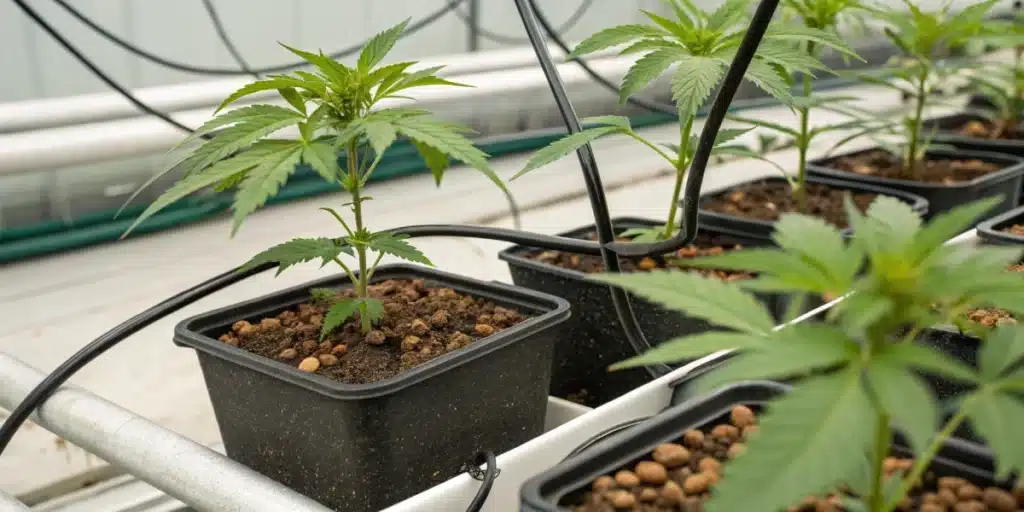
Flowering Phase of Marijuana Seeds Carbon Fiber Weed Strain
The flowering stage is the pinnacle of the Carbon Fiber Weed Strain’s growth cycle, where all the preparatory work culminates in the development of potent, resinous buds. Switching the light cycle to 12 hours of light and 12 hours of darkness triggers the flowering response, simulating the natural transition from summer to autumn.
As the Carbon Fiber marijuana strain enters this phase, its nutritional needs shift towards phosphorus and potassium to support bud formation and resin production. Switching to a bloom-specific nutrient formula can cater to these changing requirements, enhancing flower density and potency. Monitoring and adjusting pH levels and nutrient concentrations are critical to prevent lockout and ensure optimal uptake.
Maintaining a slightly cooler environment, around 65-75°F (18-24°C), with humidity levels between 40-50%, can reduce the risk of mold and stress, promoting trichome production and preserving terpene profiles.
Supporting the branches during the flowering stage is crucial as the weight of the buds increases. Using trellises or stakes can prevent branches from bending or breaking, ensuring each bud receives ample light and air flow.
Patience is key during the flowering phase. Carbon Fiber strain flowering time requires 8-10 weeks to fully mature, but this can vary. Observing the trichomes for the shift from clear to milky or amber can help determine the optimal harvest time, promising a potent and flavorful yield.
Cannabis Fertilization and Nutrition
Nutrition plays a pivotal role in the health and productivity of the Carbon Weed Strain. A comprehensive feeding schedule that adapts to the plant’s growth stages ensures that it receives the necessary macro and micronutrients for vigorous growth and bountiful flowering.
During the vegetative phase, a nitrogen-rich formula supports the development of strong stems and lush foliage. As the plant transitions to flowering, phosphorus and potassium become more critical, driving bud formation and enhancing resin production.
In addition to basic NPK fertilization, incorporating micronutrients such as calcium, magnesium, and iron can prevent deficiencies that could compromise the plant’s health and yield. Soil amendments like bone meal, bat guano, and kelp can provide a natural source of these essential nutrients.
Regular pH testing and adjustment ensure that the nutrient solution remains within the optimal absorption range, typically between 6.0 and 6.5 for soil grows. This careful management of nutrition and pH levels maximizes the efficiency of nutrient uptake, supporting healthy growth and maximizing the potential of the Carbon Fiber weed strain.
Pest And Disease Control for Cannabis Growing
While the Carbon Fiber Weed Strain exhibits natural resilience against many common pests and diseases, maintaining a proactive approach to pest and disease management is crucial for safeguarding your crop. Regular inspections and the implementation of preventative measures can help catch potential issues before they escalate.
Organic pest control methods, such as neem oil, insecticidal soaps, and the introduction of beneficial insects, offer effective solutions without compromising the quality of the final product. Similarly, practicing crop rotation and maintaining a clean grow space can minimize the risk of disease.
In the event of an infestation or outbreak, identifying the specific pest or disease and applying targeted treatments promptly is vital. This may include trimming infected foliage, adjusting environmental conditions, or applying organic fungicides or pesticides as needed.
Harvesting and Curing for Cannabis Growing
The harvest of the Carbon Fiber Weed Strain marks the culmination of months of dedicated care and cultivation. Timing the harvest correctly is critical for maximizing the potency and flavor of the buds. The transition of trichome color from clear to milky or amber signals peak cannabinoid concentration, indicating readiness for harvest.
Using sharp, sterilized scissors or pruners, carefully cut the branches, handling the buds gently to preserve their delicate trichomes. A thorough trim removes excess leaf material, focusing on preserving the resin-rich sugar leaves that contribute to the bud’s potency and aroma.
Proper drying and curing are crucial for enhancing the final product’s quality. Hanging the trimmed branches in a controlled environment with ideal temperature and humidity levels allows for a slow, even drying process that preserves the quality of each carbon fiber bud. Curing the dried buds in airtight containers gradually develops their flavor and potency, resulting in a smooth, aromatic, and high-quality cannabis experience.
Carbon Fiber Weed Strain: Indica or Sativa?
The Carbon Fiber Weed Strain embodies the pinnacle of hybridization techniques, offering a symphony of effects that cater to a wide array of preferences and medicinal needs. This strain meticulously balances the genetic heritage of Indica and Sativa, creating an experience that harmonizes the best qualities of both.
At its core, the Carbon Fiber weed strain leans towards an Indica-dominant hybrid, typically expressing a genetic composition that gravitates around 60% Indica and 40% Sativa. This carefully curated balance results in a multifaceted effect profile that captures the essence of both lineages. The Indica dominance ensures a profound sense of physical relaxation, making it an ideal choice for evening use or for those seeking relief from physical discomfort. It’s particularly noted for its ability to ease tension, soothe aches, and promote a restful sleep, all while enveloping the user in a cocoon of comfort.
However, the Sativa genetics interwoven within this strain introduce an uplifting and cerebral dimension to the experience. Users report a gentle but noticeable elevation in mood, creativity, and social engagement, attributes commonly associated with Sativa varieties. This cerebral lift complements the physical relaxation without leading to overwhelming sedation, making this strain a versatile strain that can adapt to various activities and times of day.
The interplay between the Indica and Sativa effects makes this strain an exceptional choice for those navigating the complexities of daily stress, anxiety, or seeking a spark of creativity. Its ability to deliver a balanced effect profile ensures that it caters not only to recreational users seeking a well-rounded experience but also to medicinal users who require a nuanced approach to symptom management.
Advantages of Growing Carbon Fiber Seeds
Growing the Carbon Fiber Weed Strain offers numerous benefits for cannabis cultivators:
- Exceptional potency and complex flavor profile.
- Robust growth and high resilience to pests and diseases.
- Adaptability to both indoor and outdoor cultivation methods.
- Generous yields of high-quality, resinous buds.
- Accessible for both novice and experienced growers.
Disadvantages of Growing Carbon Fiber Seeds
- May require careful odor management due to its potent aroma.
- Demands precise environmental control for optimal growth and flowering.
- Can be susceptible to overwatering, requiring diligent watering practices.
Why buy Carbon Fiber Seeds
Purchasing Carbon Fiber Weed Strain seeds offers cultivators the opportunity to experience the growth of a truly exceptional cannabis variety. Its unique blend of potency, flavor, and growing characteristics makes it a prized choice for both personal and commercial cultivation. When buying seeds, choosing a reputable online retailer ensures access to premium genetics, fostering a successful and rewarding cultivation journey.
Problem in Cultivation Carbon Fiber Seeds
While the Carbon Fiber Weed Strain is designed for resilience and adaptability, cultivators may face common challenges:
- Nutrient imbalances requiring careful monitoring and adjustment of feeding schedules.
- Environmental stressors such as temperature extremes or improper humidity levels.
- Managing the potent aroma, particularly in discreet cultivation scenarios.
With proper planning, attention to detail, and a proactive approach to cultivation, these challenges can be effectively managed, leading to a bountiful harvest of the esteemed Carbon Fiber Weed Strain.

FAQs about Carbon Fiber Weed Strain
What is Carbon Fiber Weed Strain?
Carbon Fiber Weed Strain is a unique cannabis variety known for its dense buds and potent effects. It features robust growth, a distinctive resinous coating, and a balanced flavor profile. This strain is popular among cultivators for its adaptability and rewarding yields in both indoor and outdoor settings.
What are the ideal environmental conditions for growing Carbon Fiber Weed Strain?
The weed strain Carbon Fiber thrives in controlled environments with steady temperatures and proper humidity levels. It benefits from full-spectrum lighting indoors or ample direct sunlight outdoors. Ensure well-draining, nutrient-rich soil and consistent watering to support its vigorous growth and maximize resin production for a bountiful harvest.
How does Carbon Fiber Weed Strain perform in indoor versus outdoor cultivation?
Indoor growers can benefit from precise control of temperature, humidity, and lighting when cultivating Carbon Fiber Weed Strain. Outdoors, the strain adapts well provided it receives sufficient sunlight and protection from harsh weather. Both methods yield robust plants when optimal environmental conditions and care practices are maintained.
What nutrient and watering practices are recommended for Carbon Fiber Weed Strain?
Use a balanced nutrient regimen tailored for cannabis growth, focusing on nitrogen during the vegetative phase and phosphorus and potassium during flowering. Water consistently to keep the soil moist but not saturated. Monitoring pH levels and adjusting nutrient strength will help prevent deficiencies and promote healthy plant development.
How long does it take for Carbon Fiber Weed Strain to flower?
Flowering time for Carbon Fiber Weed Strain typically ranges between 7 to 9 weeks, depending on the growing conditions and cultivation techniques used. Providing optimal light cycles, temperature, and nutrient management can help achieve a timely and successful flowering period with abundant, high-quality buds.


